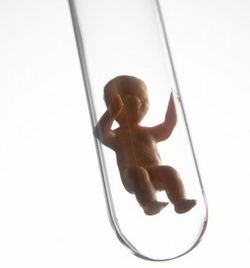Excess embryos created from previous in-vitro fertilization (IVF) cycles can be kept frozen to be used in the next IVF cycle. Frozen embryo transfer or FET is a treatment that involves transferring of frozen or thawed embryos back to the woman's womb. Using fresh embryos is more advantageous than using thawed or frozen ones, but IVF FET can also be helpful in many ways especially for women whose age is over 40. Numerous IVF FET cycles result to successful pregnancies.

Advantages of IVF FET
Some patients find FET to be less stressful than going through egg retrieval and FET has fewer medications than a regular IVF treatment. Furthermore, IVF FET is also less expensive than IVF treatment. Instead of destroying excess embryos from the last cycle it is more convenient to freeze them and use them in the next cycle. Some women especially those who are over 40 will most likely produce poorer egg quality, thus, a good quality spare egg might be of use. Women who have high risk of developing ovarian hyper stimulation syndrome (OHSS) are advised to have their embryos frozen for the next cycles so they won't have to go through another egg retrieval procedure in case the current treatment fails since taking stimulating drugs might worsen or trigger their OHSS. IVF FET is also used when using donor eggs.
Protocols for IVF FET
Hormone preparation
This protocol uses hormones to prepare the uterus for implantation. First step is suppressing the pituitary gland to reduce the chances ovulation. Women are usually advised to take Lupron for at least two weeks of daily injections. Second step of FET is using hormones to duplicate changes in the uterus during a menstrual cycle. Hormonal medications include estrogen and progesterone.
Estrogen preparation
Estrogen is given to patients to thicken and mature the uterine lining. Estrogen can be given through pills, patches, injections and through vaginal suppositories. During this time when patients are taking estrogen medications, they will regularly go to the clinic for regular monitoring. Transvaginal ultrasound is done to determine if the uterine lining is thick enough or if the patient needs a higher dosage of estrogen. A blood test is also done to know the estrogen level found in the blood. Estrogen medications can be prolonged depending on the patient's reaction to the medication.
Progesterone in FET cycle
Once the uterine lining is thick enough, the patient is given progesterone while Lupron will be automatically stopped. The progesterone will mature the uterine lining making it receptive for the embryo that will be implanted. Once progesterone is taken, time is very crucial so patients are advised to be available anytime the uterus is ready for implanting.
FET through natural cycle
This method doesn't use any kind of medication but simply relies on the woman's natural ovulation cycle. Time is also crucial as transferring of thawed embryos depends on the maturity and thickness of the uterine lining.
Success Rate of IVF FET
Using thawed embryos is said to have a lower success rate than using fresh embryos. But IVF FET success rate depends on many factors like the woman's age, cause of infertility and number of good quality eggs. FET has its own advantages and disadvantages but what's more important is that it gives hope to all infertile couples.
